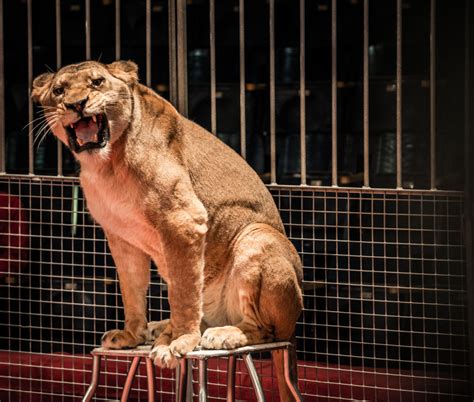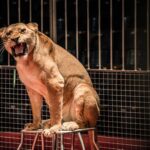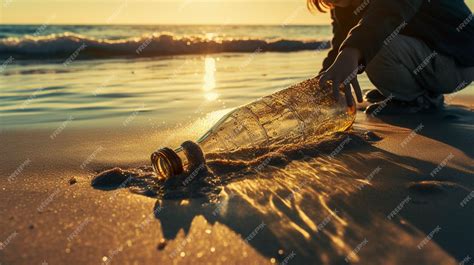
Captive-bred Seychelles giant tortoises, once destined for a life in enclosures, are exhibiting unexpected and complex social behaviors after being released into the wild on Frégate Island Private, stunning scientists and conservationists. These behaviors, including male rivalry, territorial defense, and strategic resource utilization, challenge previous assumptions about the adaptability and inherent instincts of these reptiles.
A groundbreaking study, recently published, details the remarkable transition of these tortoises from captivity to thriving members of a wild ecosystem. The findings suggest that even after generations in controlled environments, certain species retain the capacity to express a full range of natural behaviors when given the opportunity.
“What’s fascinating is that they were all born and raised in captivity,” said Dr. Cheryl Dissanayake, conservation and sustainability manager on Frégate Island, highlighting the unexpected nature of the tortoises’ adaptation. “And despite that, they’ve been able to develop all these natural behaviors.”
The release program, initially aimed at bolstering the island’s tortoise population and contributing to its overall biodiversity, has inadvertently provided a unique window into the innate capabilities of these creatures. Researchers are now closely monitoring the tortoises to further understand the factors influencing their behavior and the implications for future conservation efforts.
From Enclosure to Ecosystem: A Tortoise’s Tale
Frégate Island Private, a luxury eco-tourism destination in the Seychelles archipelago, has dedicated significant resources to restoring its native flora and fauna. The island’s commitment to conservation has made it an ideal location for reintroduction programs, including the release of captive-bred Seychelles giant tortoises ( Aldabrachelys gigantea).
The tortoise release program was initially conceived as a way to enhance the island’s ecological integrity. However, the researchers were unprepared for the extent of the tortoises’ adaptation and the complexity of their behavior. Prior to the release, the tortoises lived in relatively confined spaces, with limited opportunities for social interaction or natural foraging. The assumption was that their captive upbringing would have dulled their natural instincts, making them less capable of navigating the challenges of a wild environment.
The reality proved to be quite different. Within a relatively short period after their release, the tortoises began to exhibit behaviors that were previously unseen or underestimated. Male tortoises engaged in competitive displays, vying for dominance and access to prime feeding areas. They established territories, defending them against rivals with surprising tenacity. The tortoises also demonstrated a sophisticated understanding of their environment, strategically utilizing resources such as shade and water to maximize their survival.
Unveiling the Complexity of Tortoise Society
One of the most striking observations was the development of a clear social hierarchy among the male tortoises. Dominant males asserted their authority through physical displays, including head-bobbing, shell-ramming, and even outright combat. These displays were not merely symbolic; they had real consequences for access to resources and mating opportunities.
Subordinate males, on the other hand, adopted different strategies. Some attempted to avoid confrontation altogether, while others sought to challenge the dominant males at opportune moments. The researchers noted that the social dynamics were constantly evolving, with tortoises shifting positions in the hierarchy based on their physical condition, experience, and strategic acumen.
The tortoises’ ability to find and utilize resources effectively was also remarkable. They quickly learned to identify the best sources of food and water, often traveling considerable distances to reach them. They also demonstrated an understanding of microclimates, seeking out shady areas during the hottest parts of the day and basking in the sun to regulate their body temperature.
Furthermore, the tortoises showed an ability to learn from each other. Researchers observed younger tortoises following older, more experienced individuals, presumably to learn about the best foraging locations and how to avoid predators. This type of social learning is a crucial adaptation for any species attempting to thrive in a novel environment.
Implications for Conservation and Beyond
The findings from Frégate Island have significant implications for conservation efforts worldwide. They suggest that captive breeding programs can be more effective than previously thought, even for species that have spent generations in controlled environments. By providing captive-bred animals with the opportunity to express their natural behaviors, conservationists can increase their chances of successfully reintroducing them into the wild.
The study also highlights the importance of creating suitable habitats for reintroduced species. Frégate Island’s commitment to restoring its native ecosystem has undoubtedly played a crucial role in the tortoises’ success. By providing them with ample food, water, and shelter, the island has created an environment where they can thrive and express their full range of natural behaviors.
Moreover, the research underscores the value of long-term monitoring programs. By closely observing the tortoises over an extended period, the researchers have been able to gain a deeper understanding of their behavior and adaptation. This information is invaluable for informing future conservation efforts and ensuring the long-term survival of these magnificent creatures.
The success of the Frégate Island tortoise release program serves as a powerful reminder that even after generations in captivity, animals retain a remarkable capacity for adaptation and resilience. By providing them with the opportunity to express their natural behaviors, we can help them to thrive in the wild and contribute to the restoration of ecosystems around the world.
The Bigger Picture: Tortoises and Island Ecology
Seychelles giant tortoises are not just charismatic megafauna; they are also keystone species that play a vital role in maintaining the health and biodiversity of island ecosystems. As herbivores, they help to control vegetation growth, preventing any one plant species from dominating the landscape. Their grazing habits also create opportunities for other plant species to thrive, increasing overall plant diversity.
Furthermore, tortoises act as seed dispersers, helping to spread plant seeds across the landscape. When they eat fruits and vegetables, the seeds pass through their digestive system unharmed and are deposited in their droppings. This process helps to ensure that plants can colonize new areas and maintain healthy populations.
Tortoises also contribute to nutrient cycling by breaking down organic matter and returning it to the soil. Their droppings are rich in nutrients, which help to fertilize the soil and support plant growth. This process is particularly important in island ecosystems, where nutrient availability can be limited.
In addition to their ecological roles, tortoises also have cultural significance in many parts of the world. They are often seen as symbols of longevity, wisdom, and resilience. In some cultures, they are even considered sacred animals.
Threats to Tortoise Populations
Despite their resilience, tortoise populations around the world face a number of threats, including habitat loss, poaching, and climate change. Habitat loss is a major problem, as tortoises require large areas of undisturbed land to survive. As human populations grow and development expands, tortoise habitats are increasingly being fragmented and destroyed.
Poaching is another significant threat, as tortoises are often hunted for their meat and shells. In some parts of the world, tortoise shells are used in traditional medicine or as decorative items. The illegal trade in tortoises has driven some species to the brink of extinction.
Climate change is also posing a growing threat to tortoise populations. Rising temperatures and changing rainfall patterns can disrupt their habitats, making it difficult for them to find food and water. Climate change can also increase the frequency and intensity of extreme weather events, such as droughts and floods, which can have devastating impacts on tortoise populations.
Conservation Efforts: Protecting Tortoises for Future Generations
Fortunately, there are many conservation efforts underway to protect tortoise populations around the world. These efforts include habitat restoration, anti-poaching patrols, and captive breeding programs.
Habitat restoration is a crucial component of tortoise conservation. By restoring degraded habitats, conservationists can provide tortoises with the resources they need to survive. This can involve planting native vegetation, removing invasive species, and creating artificial water sources.
Anti-poaching patrols are essential for protecting tortoises from illegal hunting. These patrols involve monitoring tortoise habitats and arresting poachers. In some cases, drones and other technologies are used to detect and track poachers.
Captive breeding programs are used to increase the populations of endangered tortoise species. These programs involve breeding tortoises in captivity and then releasing them into the wild. Captive breeding can be an effective way to boost tortoise populations, but it is important to ensure that the released tortoises are able to adapt to their natural environment.
The Future of Tortoises: A Call to Action
The future of tortoises depends on our collective efforts to protect them from the threats they face. We can all play a role in tortoise conservation by supporting conservation organizations, reducing our carbon footprint, and educating others about the importance of tortoises.
By working together, we can ensure that these magnificent creatures continue to thrive for generations to come. The story of the Seychelles giant tortoises on Frégate Island serves as a powerful reminder that even after generations in captivity, animals retain a remarkable capacity for adaptation and resilience. By providing them with the opportunity to express their natural behaviors, we can help them to thrive in the wild and contribute to the restoration of ecosystems around the world. It is imperative to support and expand such initiatives to ensure the long-term survival of these keystone species and the health of the ecosystems they inhabit.
The observed behaviors also beg further research into the epigenetic factors that may influence these animals. Even though the tortoises were raised in captivity, epigenetic changes (alterations in gene expression that do not involve changes to the underlying DNA sequence) during their development could have predisposed them to express certain behaviors once released into a more natural environment. Understanding these mechanisms could significantly enhance the efficacy of future reintroduction programs.
Frequently Asked Questions (FAQ)
-
What is the significance of the Seychelles giant tortoises exhibiting natural behaviors after being raised in captivity?
- It suggests that even after generations in controlled environments, certain species retain a remarkable capacity to express a full range of natural behaviors when given the opportunity in a wild environment. This challenges assumptions about the limitations of captive breeding programs and highlights the importance of providing suitable habitats for reintroduced species. Dr. Cheryl Dissanayake emphasizes this point, noting that “they were all born and raised in captivity, and despite that, they’ve been able to develop all these natural behaviors.”
-
What types of natural behaviors have the released Seychelles giant tortoises displayed?
- The tortoises have exhibited a range of complex social behaviors, including male rivalry, territorial defense, and strategic resource utilization. Male tortoises engage in competitive displays, vying for dominance and access to prime feeding areas. They establish territories, defending them against rivals. The tortoises also demonstrated a sophisticated understanding of their environment, strategically utilizing resources such as shade and water.
-
How does the Frégate Island Private’s commitment to conservation contribute to the success of the tortoise reintroduction program?
- Frégate Island Private has dedicated significant resources to restoring its native flora and fauna, creating a suitable habitat for the tortoises. The island provides ample food, water, and shelter, allowing the tortoises to thrive and express their full range of natural behaviors. This commitment has been crucial to the success of the reintroduction program.
-
What are the broader implications of this study for conservation efforts worldwide?
- The findings suggest that captive breeding programs can be more effective than previously thought, even for species that have spent generations in controlled environments. By providing captive-bred animals with the opportunity to express their natural behaviors, conservationists can increase their chances of successfully reintroducing them into the wild. The study also highlights the importance of long-term monitoring programs for gaining a deeper understanding of animal behavior and adaptation.
-
What are some of the threats facing tortoise populations around the world, and what conservation efforts are underway to address them?
- Tortoise populations face threats such as habitat loss, poaching, and climate change. Conservation efforts include habitat restoration, anti-poaching patrols, and captive breeding programs. Habitat restoration involves planting native vegetation and removing invasive species. Anti-poaching patrols monitor tortoise habitats and arrest poachers. Captive breeding programs aim to increase the populations of endangered species and release them into the wild.
In-Depth Analysis: Unpacking the “Unprecedented” Behavior
The term “unprecedented,” as initially used to describe the behavior of the released Seychelles giant tortoises, carries significant weight. It suggests that the observed actions and adaptations far exceeded the expectations of the scientists and conservationists involved. To fully grasp the magnitude of this “unprecedented” nature, a deeper dive into the specific behaviors and their implications is warranted.
Firstly, the emergence of complex social hierarchies among the male tortoises was a particularly surprising development. Prior to their release, these tortoises had limited exposure to natural social dynamics. The assumption was that their captive environment, characterized by limited space and artificial feeding regimes, would have suppressed the development of such intricate social structures. However, upon being introduced to a more natural setting, the tortoises quickly established a dominance hierarchy, with dominant males asserting their authority through physical displays and subordinate males adopting different strategies to cope with their lower status. This behavior demonstrates a level of social intelligence and adaptability that was previously underestimated.
Secondly, the tortoises’ ability to effectively utilize the resources available in their new environment was equally remarkable. They quickly learned to identify the best sources of food and water, often traveling considerable distances to reach them. They also demonstrated an understanding of microclimates, seeking out shady areas during the hottest parts of the day and basking in the sun to regulate their body temperature. This behavior indicates a high degree of environmental awareness and the capacity for learning and adaptation.
Thirdly, the observation of social learning among the tortoises was particularly noteworthy. Researchers observed younger tortoises following older, more experienced individuals, presumably to learn about the best foraging locations and how to avoid predators. This type of social learning is a crucial adaptation for any species attempting to thrive in a novel environment. It suggests that the tortoises are not merely relying on instinct, but also actively learning from each other and transmitting knowledge across generations.
Furthermore, the speed at which these behaviors emerged was also surprising. Within a relatively short period after their release, the tortoises began to exhibit these complex social and ecological adaptations. This suggests that the underlying neural and physiological mechanisms for these behaviors were already present, even if they were not expressed in the captive environment.
The “unprecedented” nature of these findings underscores the importance of providing captive-bred animals with the opportunity to express their natural behaviors. By creating suitable habitats and allowing them to interact with their environment in a meaningful way, we can unlock their full potential and increase their chances of successfully adapting to the wild.
Beyond Behavior: Genetics and Epigenetics
While the behavioral adaptations of the released tortoises are remarkable in themselves, they also raise intriguing questions about the role of genetics and epigenetics. To what extent are these behaviors hardwired into the tortoises’ genes, and to what extent are they influenced by environmental factors?
Genetic factors undoubtedly play a role in shaping the tortoises’ behavior. Their inherent instincts, such as the drive to forage for food and defend their territory, are likely encoded in their genes. However, the specific expression of these instincts can be influenced by environmental factors.
Epigenetics, the study of heritable changes in gene expression that do not involve changes to the underlying DNA sequence, may also play a significant role. Environmental factors, such as diet, stress, and social interactions, can alter the epigenetic marks on an animal’s DNA, leading to changes in gene expression and behavior. It is possible that the captive environment experienced by the tortoises prior to their release had altered their epigenetic marks, predisposing them to express certain behaviors once they were introduced to a more natural setting.
Further research is needed to fully understand the interplay between genetics, epigenetics, and environment in shaping the behavior of the released tortoises. Such research could involve comparing the genomes and epigenomes of captive-bred and wild-caught tortoises, as well as conducting experiments to investigate the effects of different environmental factors on tortoise behavior.
The Ethical Dimensions of Reintroduction
The success of the Frégate Island tortoise reintroduction program also raises important ethical considerations. Is it ethical to release captive-bred animals into the wild, even if they are able to adapt and thrive? What are the potential risks to the existing ecosystem, and how can these risks be mitigated?
Some argue that it is unethical to release captive-bred animals into the wild because they may not be fully equipped to survive in a natural environment. They may lack the necessary skills to find food, avoid predators, and compete with wild animals. Furthermore, they may introduce diseases or parasites that could harm the existing ecosystem.
Others argue that reintroduction programs are essential for conserving endangered species and restoring degraded ecosystems. They believe that the benefits of reintroduction outweigh the risks, provided that the programs are carefully planned and implemented.
In the case of the Frégate Island tortoises, the reintroduction program appears to have been successful, with the tortoises adapting well to their new environment and contributing to the overall health of the ecosystem. However, it is important to acknowledge that there are always potential risks associated with reintroduction programs.
To mitigate these risks, it is essential to conduct thorough risk assessments prior to releasing any captive-bred animals into the wild. These assessments should consider the potential impacts on the existing ecosystem, as well as the health and well-being of the released animals. It is also important to monitor the released animals closely after their release to ensure that they are adapting successfully and not causing any harm to the environment.
The Frégate Island tortoise reintroduction program serves as a valuable case study for future reintroduction efforts. It demonstrates that with careful planning and implementation, captive-bred animals can be successfully reintroduced into the wild and contribute to the restoration of ecosystems. However, it also underscores the importance of considering the ethical dimensions of reintroduction and mitigating the potential risks.
Looking Ahead: Sustainable Ecotourism and Conservation Synergy
Frégate Island Private operates as a luxury ecotourism destination, demonstrating a potential synergy between conservation and sustainable tourism. The island’s commitment to conservation is not merely altruistic; it is also integral to its business model. The pristine environment and abundant wildlife are major attractions for tourists, generating revenue that can be reinvested in conservation efforts.
This model highlights the potential for ecotourism to contribute to conservation. By generating revenue and raising awareness about the importance of biodiversity, ecotourism can provide a strong incentive for protecting natural resources. However, it is important to ensure that ecotourism is truly sustainable and does not have negative impacts on the environment or local communities.
To be sustainable, ecotourism must be carefully managed to minimize its environmental footprint. This can involve implementing measures to reduce waste, conserve water, and minimize energy consumption. It is also important to ensure that ecotourism activities do not disturb wildlife or damage sensitive habitats.
Furthermore, ecotourism should benefit local communities. This can involve providing employment opportunities, supporting local businesses, and investing in community development projects. By ensuring that local communities benefit from ecotourism, they are more likely to support conservation efforts and protect natural resources.
The Frégate Island Private model provides a promising example of how ecotourism and conservation can work together to achieve mutual benefits. By investing in conservation and promoting sustainable tourism practices, the island has created a thriving ecosystem and a successful business. This model could be replicated in other parts of the world to promote conservation and sustainable development.
The Role of Citizen Science and Education
Engaging the public in scientific research and conservation efforts is crucial for raising awareness and fostering a sense of stewardship towards the environment. Citizen science projects, where volunteers contribute to data collection and analysis, can provide valuable insights into ecological processes and inform conservation decisions.
On Frégate Island, involving tourists and local communities in monitoring the tortoise population could enhance the research efforts and promote a greater understanding of the animals’ behavior and ecology. This could involve training volunteers to identify individual tortoises, record their movements, and collect data on their diet and health.
Educational programs are also essential for raising awareness about the importance of conservation and inspiring future generations of conservationists. These programs can be tailored to different age groups and audiences, using a variety of methods to engage and inform.
On Frégate Island, educational programs could focus on the ecology of the island, the threats facing tortoise populations, and the importance of conservation. These programs could involve guided tours, interactive exhibits, and hands-on activities. By educating visitors and local communities about the importance of conservation, Frégate Island can foster a sense of responsibility and encourage them to take action to protect the environment.
The Continuing Story of the Tortoises
The story of the Seychelles giant tortoises on Frégate Island is an ongoing saga, with new discoveries and insights emerging all the time. As the tortoises continue to adapt to their environment and interact with each other, researchers will undoubtedly uncover even more fascinating aspects of their behavior and ecology.
The long-term monitoring program on Frégate Island will be crucial for tracking the tortoises’ progress and assessing the effectiveness of the reintroduction program. This program will involve collecting data on the tortoises’ population size, distribution, health, and behavior. The data will be used to inform conservation decisions and ensure that the tortoises continue to thrive.
The story of the Frégate Island tortoises serves as a reminder that even after generations in captivity, animals retain a remarkable capacity for adaptation and resilience. By providing them with the opportunity to express their natural behaviors, we can help them to thrive in the wild and contribute to the restoration of ecosystems around the world. It is imperative to support and expand such initiatives to ensure the long-term survival of these keystone species and the health of the ecosystems they inhabit. The “unprecedented” behavior of these tortoises is not just a scientific curiosity; it is a testament to the power of nature and the importance of conservation.
The success of Frégate Island’s program also underscores the potential for similar initiatives across the globe, particularly for other endangered species that have been subject to captive breeding programs. The lessons learned from the Seychelles giant tortoises can be applied to the reintroduction efforts for other species, maximizing their chances of survival and contributing to the overall health of the planet’s biodiversity. The story continues, and its future chapters hold great promise for conservation efforts worldwide. The potential for these creatures to adapt, thrive, and reshape their ecosystems in positive ways is a powerful reminder of the importance of investing in their protection.









